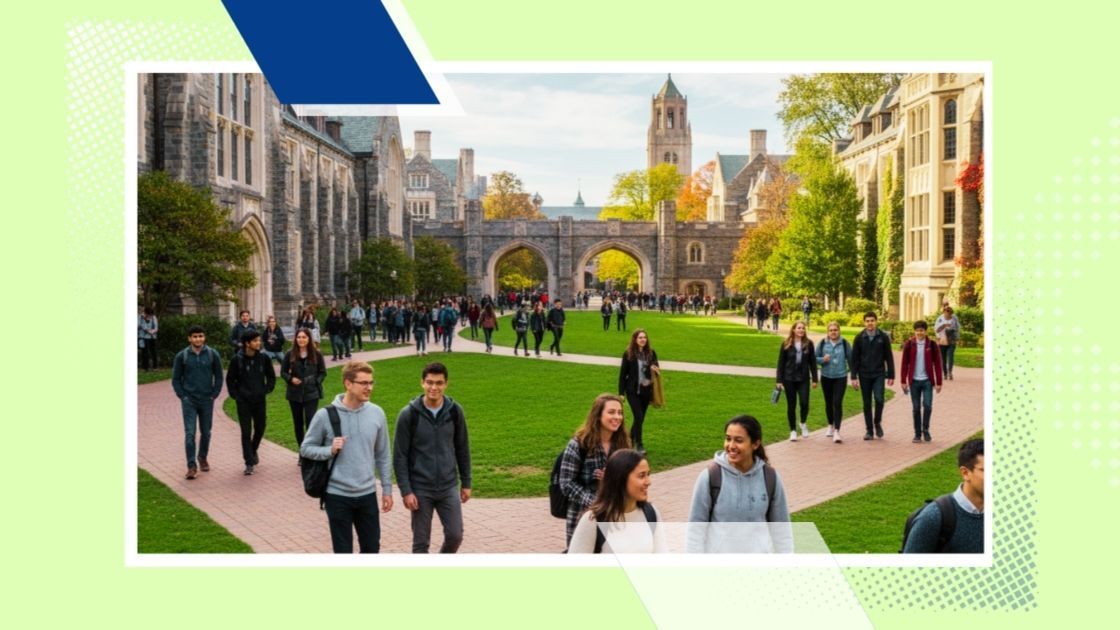Princeton vs Columbia: Which Ivy League Is Best for Mechanical Engineering?
Choosing between Princeton and Columbia for mechanical engineering feels like comparing two excellent tools - each built for different jobs. Both are Ivy League schools with stellar reputations, but they offer distinct environments, curricula, research strengths, and campus experiences. Below I break down the practical differences that matter to prospective mechanical-engineering students, highlight acceptance-rate context (keywords included), and finish with FAQs to help you decide.
Quick Facts You Need to Know
-
Princeton: Smaller undergraduate population, strong emphasis on undergraduate teaching, close faculty access, and an integrated Mechanical & Aerospace Engineering program with ample research opportunities. See Princeton MAE program pages for details.
-
Columbia: Located in New York City, Columbia Engineering (Fu Foundation School of Engineering & Applied Science) pairs engineering rigor with Columbia’s Core Curriculum and the professional/networking advantages of a major global city. Columbia’s Mechanical Engineering degree emphasizes both technical depth and liberal-arts breadth.

Acceptance-rate context
-
If you’re searching for acceptance rate at Princeton, Princeton has been extremely selective in recent cycles; multiple public trackers report overall admission rates in the single-digit percent range (recent cycles reported around ~4-5%). Official Princeton admissions pages also publish class statistics.
-
For acceptance rate at Columbia, Columbia’s overall acceptance rate is similarly low - commonly reported in the mid-single digits (around ~4–5% in recent cycles). Columbia’s admissions pages and class profiles publish the admitted/enrolled counts and class profiles each year.
(Takeaway: both schools are very selective; don't treat acceptance percentages alone as a tie-breaker.)
Academics & curriculum - what you’ll actually learn
Princeton (MAE)
-
Princeton’s Mechanical & Aerospace Engineering program is structured to give rigorous fundamentals (dynamics, thermodynamics, solid/fluid mechanics) plus opportunities for focused work in lab research, design projects, and interdisciplinary study. Princeton emphasizes close faculty mentorship and undergraduate research with relatively small cohort sizes, giving many students early access to meaningful lab roles and senior thesis options.
Columbia (Mechanical Engineering, SEAS)
-
Columbia’s mechanical engineering curriculum balances engineering core courses with Columbia’s Core Curriculum and 27 points of nontechnical credits inside the B.S. degree (which gives room for humanities, social sciences, and cross-school electives). Columbia offers abundant electives, applied labs, and engineering research but couples that with city-based internships, industry projects, and collaborations with nearby hospitals, startups, and industry partners.
(Practical difference: Princeton leans undergraduate-research and faculty access; Columbia leans breadth, NYC industry ties, and curricular flexibility.)
Research, labs & hands-on experience
-
Princeton: Known for strong, faculty-led research programs where undergraduates often join labs early. Departments encourage senior theses and independent projects if you want an undergraduate research trajectory that can lead directly into grad school or research roles.
-
Columbia: Offers strong lab facilities and city-driven opportunities (industry partnerships, internships, applied projects). Columbia students commonly work on industry-facing capstones or summer internships in NYC engineering firms, finance-tech hardware groups, and aerospace/startup labs.
Location & lifestyle - campus vs city
-
Princeton: Traditional college town campus feel (suburban, cohesive residential life). If you prefer a quieter campus with strong residential culture and tight student communities, Princeton is designed for that.
-
Columbia: Situated in Manhattan - the city is your campus. If you crave industry networking, easy internships, cultural diversity, and a fast pace, Columbia delivers unmatched access to New York City’s tech, finance, design, and industrial ecosystems.
Career outcomes & recruiting
-
Recruiting at Princeton often reflects strong placements in R&D, graduate school, defense/aerospace, and tech companies that value the school’s rigorous fundamentals and research experience.
-
Recruiting at Columbia benefits from NYC proximity: more internships and employer visits (startups, large industrial firms, consulting, finance) and easier access to recruitment pipelines that want engineering graduates with broad skills.
Both schools have strong employer networks - Princeton’s comes from its research pedigree and alumni network; Columbia’s from its NYC location and industry connections. (See department career pages for up-to-date employer lists.)
Cost, aid & financial considerations
-
Princeton has a strong institutional aid program with need-based packages and a commitment to meet full demonstrated need (many students graduate debt-free depending on family financials).
-
Columbia offers aid too, but costs and aid packages can vary; NYC living costs should be factored into budgets. Consult each university’s affordability pages for details. Columbia Undergraduate Admissions
Who should choose which?
Choose Princeton if:
-
You want a close-knit undergraduate experience with easy faculty access, a heavy emphasis on undergraduate research and senior thesis, and a traditional campus environment.
-
You’re aiming for research or graduate school and value mentorship and small cohort culture.
Choose Columbia if:
-
You want the energy and professional access of New York City, a curriculum that balances engineering with a broad liberal-arts core, and plentiful internship and industry project opportunities.
-
You prefer flexibility to combine engineering with business, arts, or urban technology experiences.
Final comparison
-
Undergraduate focus: Princeton = undergraduate research + mentorship; Columbia = engineering + Core Curriculum + industry ties.
-
Acceptance: Both have very low acceptance rates (single-digit %). See official class profiles and admissions pages for the latest numbers.
FAQs
Q: Which school is better for getting into grad school in mechanical engineering?
A: Both prepare strong applicants for graduate study. Princeton’s emphasis on undergraduate research and senior thesis can give a slight edge for research-focused grad applications; Columbia students with strong research or industry experience are also very competitive.
Q: What is the acceptance rate at Princeton and the acceptance rate at Columbia?
A: Both schools are extremely selective; recent public trackers and each university’s admissions pages report overall acceptance rates in the mid to low single digits (commonly ~4–6% in recent cycles). For precise current percentages for a given admission year, consult each school’s official admissions or class profile pages.
Q: Can I do internships while studying engineering at Princeton?
A: Yes, but Princeton’s location means internships often require longer travel or summer placements. The university supports internships and industry connections but the rhythm differs from Columbia’s city-based, short-commute opportunities.
Q: Does Columbia require engineering students to complete the Core Curriculum?
A: Columbia Engineering students complete a designated number of nontechnical credits as part of the degree; the Core Curriculum influences the broader liberal-arts education available to students. Check SEAS program requirements for exact nontechnical point requirements.
Q: Which has better hands-on labs and maker spaces?
A: Both have strong lab facilities. Princeton emphasizes lab access in faculty research groups; Columbia emphasizes applied labs plus partnerships with NYC industry. Specific equipment and lab focus areas differ - examine department lab pages to compare specialties.
Q: How should I decide if I’m accepted to both?
A: Ask yourself: Do I want a quiet campus with intensive faculty mentorship (Princeton) or a city environment with immediate industry access and curricular breadth (Columbia)? Also compare financial aid offers, specific faculty/research groups you want to work with, and campus culture fit.
Closing thoughts
There’s no universal “better” - Princeton and Columbia each excel for mechanical engineering, but they serve different student priorities. If undergraduate research, close mentoring, and a classic campus experience are your aims, Princeton is a terrific fit. If you want NYC’s networking, internships, and curricular flexibility alongside strong engineering training, Columbia shines. Whichever you choose, both open doors - the right answer is the one that fits how you want to learn and live during those four years.
Start your Ivy League journey with expert support from PathIvy. Schedule your free consultation today.
.png?width=175&height=73&name=ORIGINAL%20LOGO%20Blue%20and%20Green%20(1).png)
.png?width=50&name=author-image%20(2).png)


